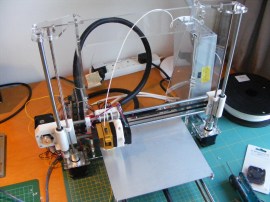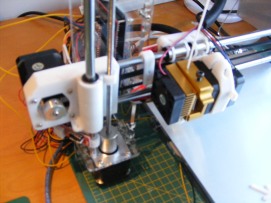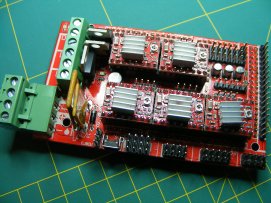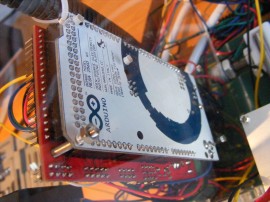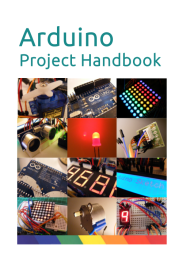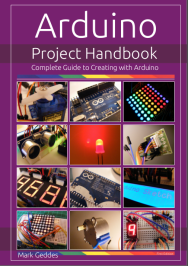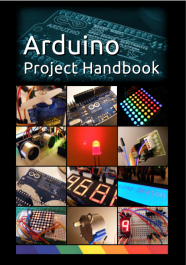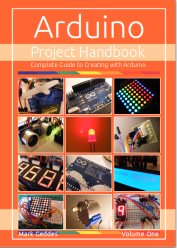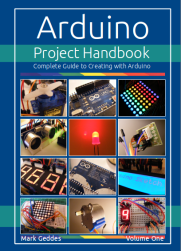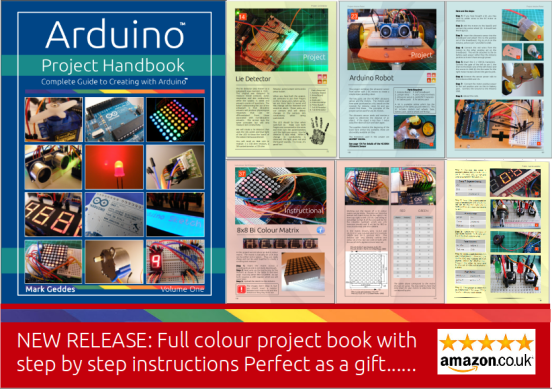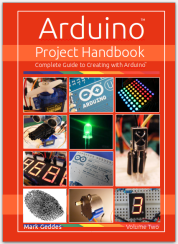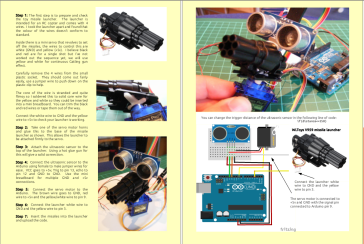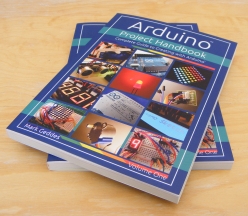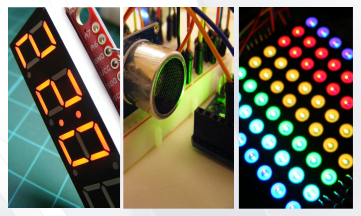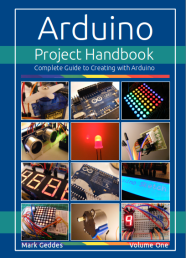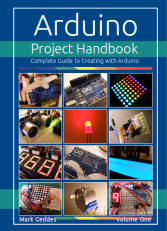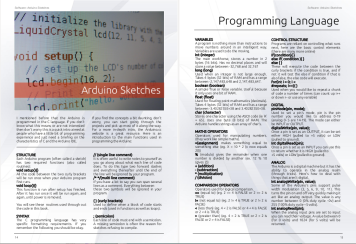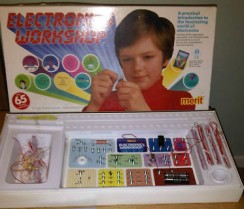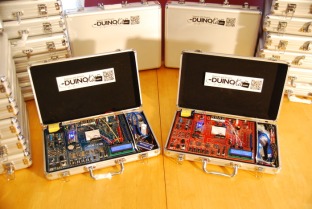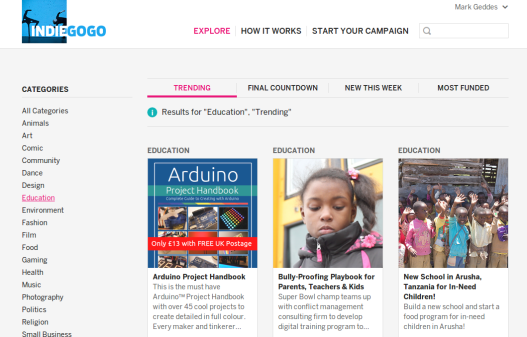The Story so far….
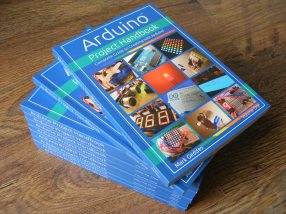
Arduino Project Handbook

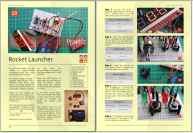
Creating this book has been some journey so I felt I should share my experience so far in case it may help someone else. (Some of the following info is from the original Indiegogo campaign).
My name is Mark and I live and work in South West Scotland. Back in the late Eighties I was tinkering with electronics, programming and creating gadgets. Wind forward a few years (quite a few!) with an honours degree in design, 2 kids and a career in economic development, I’ve rediscovered my passion for creating. I’ve discovered the Arduino™ and can now recreate those gadgets from long ago but this time using a ‘brain’ to control them.
I like books. I like visual books. I like practical books. I like books that are all of these things! Most Arduino™ books are text heavy, have few images or those that do are in black and white. I couldn’t find a book on the Arduino™ that was simple, practical, visually stimulating and most of all that I wanted to own as a reference (bit like a scrap book of great ideas).
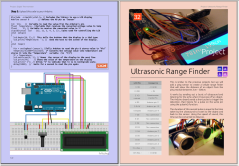
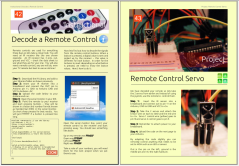
The internet is bursting with tutorials and articles covering the Arduino™ and what it can do but can also be frustrating. Many of the online guides are good but usually lack any detailed visual reference and many of the YouTube guides lack the code required (I’m sure you know what I mean!) Whilst there are many great Arduino books available I couldn’t find one that was visually stimulating but practical at the same time. I decided to experiment with the Arduino™ and create a record of my achievements that I could refer back to and share with my 10 year old son – this book is a result of that.
This is the type of book I was looking for but didn’t exist, I hope that now it does, you might want it too.
This would be great for SCHOOLS, MAKER SPACES or just individual MAKERS like me. Ideal for someone thinking about starting with the Arduino™ or equally valuable for the experienced maker as a visual reference and inspiration.
My Self Publishing Journey:
I wrote the book in my spare time over the last year. I didn’t start out to write a book, it was only after 6 months that I realised I had enough material, sketches, diagrams and photos that I could put together and share.
I did a fair bit of research and discovered that the type of book that I wanted didn’t really exist so I set about creating my own.
The software I used to create the book was all open source running on Ubuntu. There are some great packages such as LibreOffice Draw, Inkscape and GIMP available for free, although it did take a bit of time to come to terms with some of the functionality. You need to make sure that the software you use is capable of outputting ‘print-ready’ PDFs.
I planned out the book structure using post it notes which allowed me to move things around easily and found that the book was running at about 180 pages. Working out the printing cost was quite a challenge. I searched the internet for weeks getting quotes for a full colour book – the prices varied greatly. China is widely known for cheap printing but the volumes and shipping costs just didn’t stack up for me. Another consideration was quality, I wanted not only a useful and interesting book but also one that looked and felt good. For this reason I decided to stick with a UK company for greater control. After getting samples, quotes and discussing requirements I found a printer that I felt I could work with.
Next step was how to fund the printing. I could have self funded the project from the beginning but it was more important to me to make sure there was a market for my book – what is the point of printing hundreds of books that nobody might buy? I work with the film and TV industry so was aware of crowd funding site Indiegogo and this was the perfect platform to test my book idea.
Indiegogo Campaign
I had done my research, had most of the book written and knew the costs associated with publishing so started to create my Indiegogo campaign. I set a fixed target that I knew, if reached, would be enough to produce the book and send out copies to backers. This meant was there was no risk to my backers as nobody would pay anything if the target was not met.
Now here comes my biggest mistake – I was going live with the campaign without priming social media in advance! I had no Facebook, twitter or website presence for the book other than the Indiegogo campaign page. Over the first weekend I rectified that and started to tweet, blog and post to generate interest. I can’t overemphasise the time and effort you need to put into this – it’s your campaign, no one else will push it for you initially.
My campaign ran for 40 days (in hindsight I would have made it 50) and I was fortunate enough to reach my target with 17 days to go. I achieved 164% of target in the end which was great and allowed me to increase the production run. Most importantly for me, it showed there was interest in my book.
I set conservative postage costs for sending the book out and I have to admit I underestimated how far spread the interest would be. In the end backers from 33 different countries bought the book so I was glad of the extra 64% raised as that all went on covering postage costs! Make sure you check this out in advance – UK postage is particularly expensive. Luckily I knew the dimensions and weight of the book before it was printed so could work this out.
I self published as I wanted to keep control of the full process from the beginning but this comes with its own challenges. In order for book stores etc. to stock your book you will need an ISBN (International Standard Book Number) and register this in advance with the agency for your country. In the UK it’s the Neilson Agency and I have to admit the process has been great, they are really helpful and will answer your queries efficiently. Once you have an ISBN sites such as Amazon can pick it up but that’s a whole different post!
The book was published on 21 June 2014 and so far, a week in, I have sold 400 copies, considering most first time authors sell 100 in the first year I think that’s pretty good going.
Many thanks again to all my backers and hopefully I can start on volume two soon.
